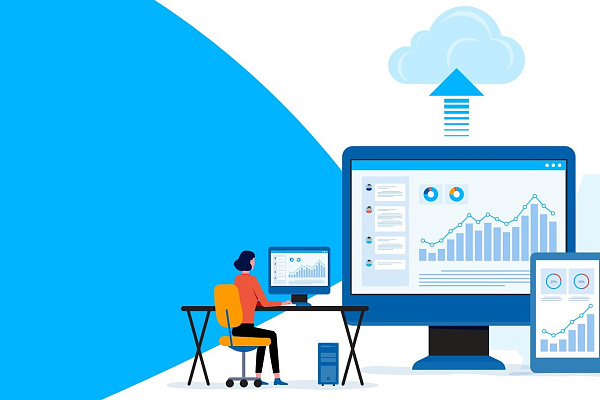Disaster Recovery (DR) is a security planning model designed to protect an enterprise from the effects of natural disasters (fire, flood, earthquake, hurricane, lightning storm), human errors, equipment failures, malware/ransomware attacks. The disaster recovery plan focuses on preserving critical functions before, during, and after a disaster to mitigate disruptions, restore data quickly, and resume operations.
Backup is the creation of a copy of data on an additional storage medium (external hard drive, cloud storage, etc.). Backup is necessary for restoring data if it is damaged or destroyed in the main storage.
Data backup and disaster recovery go hand in hand to support business continuity, yet they are not the same. In this article, we observe the difference between disaster recovery and backup.
Backup and disaster recovery definition
Backup
This is the creation of copies of important information for its further recovery due to any kind of damage, corruption, or loss – it may be a system failure, as well as the human factor. Typically, data copies are created every day, but for certain information, depending on the needs and scope of activity of the company, this process sometimes happens more frequently (once an hour). For example, databases must be backed up very often, because any failure could lead to the loss of important transactions.
Regarding data recovery after a disaster, it is a very time-consuming process. Its duration depends on the amount of lost data and the backup scheme used.
The main parameters of backup are RPO and RTO metrics. They help to qualify the performance of the backup system.
The RPO (recovery point objective) is the maximum amount of time data can be lost as a result of an incident. For example, you have an information system and defined the RPO for it as 1 hour. This means that if an accident happens, the system will lose no more than the last hour of data. This indicator informs, how often to back up the system, and what technologies to use to keep this indicator.
The RTO (recovery time objective) is the amount of time the system can remain unavailable in the event of a disaster. For example, there was a fire in the data center, but it is required that the system be available again within 2 hours. This is what RTO is all about. It is necessary to plan so that during this interval to restore the availability of the information system on the reserve equipment or site. This can be done by using different fault-tolerance technologies or by simply restoring from backups to another server.
Any company that cares about its reputation and controls its financial activities must make sure to use backup systems, especially those that work with critical data, such as operating systems, file documents, mailboxes, and virtual machines.
Disaster Recovery
When it is necessary to restore the information system in the shortest possible time – use cloud disaster recovery. The system is designed to get services back up and running in case of disaster, which caused the failure of the entire virtual infrastructure.
Disaster Recovery resumes the operation of the virtual environment online at a site operating in a different geographical location. In the event of a disaster, virtual servers will simply start up and function again, but from a remote location. The system can operate in a situation with zero RPO and several minutes RTO, regardless of the number of virtual machines in use. It follows that disaster recovery is a solution that protects services from prolonged downtime, but unlike backups, it does not ensure data security.
If the physical server fails, both systems allow to restore the lost information, but if the user deletes the files, only creating backups saves the situation. The reason for this is that deleted or corrupted information will be replicated to a remote site, so using only disaster recovery is not a viable solution. That is why cloud provider customers choose to have a mix of both services.
If you choose only one option, then the backup is a necessity for any company while building a DRS (Disaster Recovery System) is most important for large organizations and government agencies, because their services and corporate network must operate all the time.
Disaster Recovery and Backups solutions - how to choose the best option for business
Cloud4U provides both Disaster Recovery-as-a-Service and Backup-as-a-Service solutions to secure virtual servers and data. These solutions help protect important data and systems from various incidents, but at the same time, they pursue different goals.
Backup enables you to restore data for any amount of time provided by the backup plan and protects information from loss during disasters. However, it will take a long time to restore data, and in the event of a major disaster, all servers can fail.
On the other hand, disaster recovery quickly recovers the virtual infrastructure, but it creates only one copy and does not guarantee data integrity.




